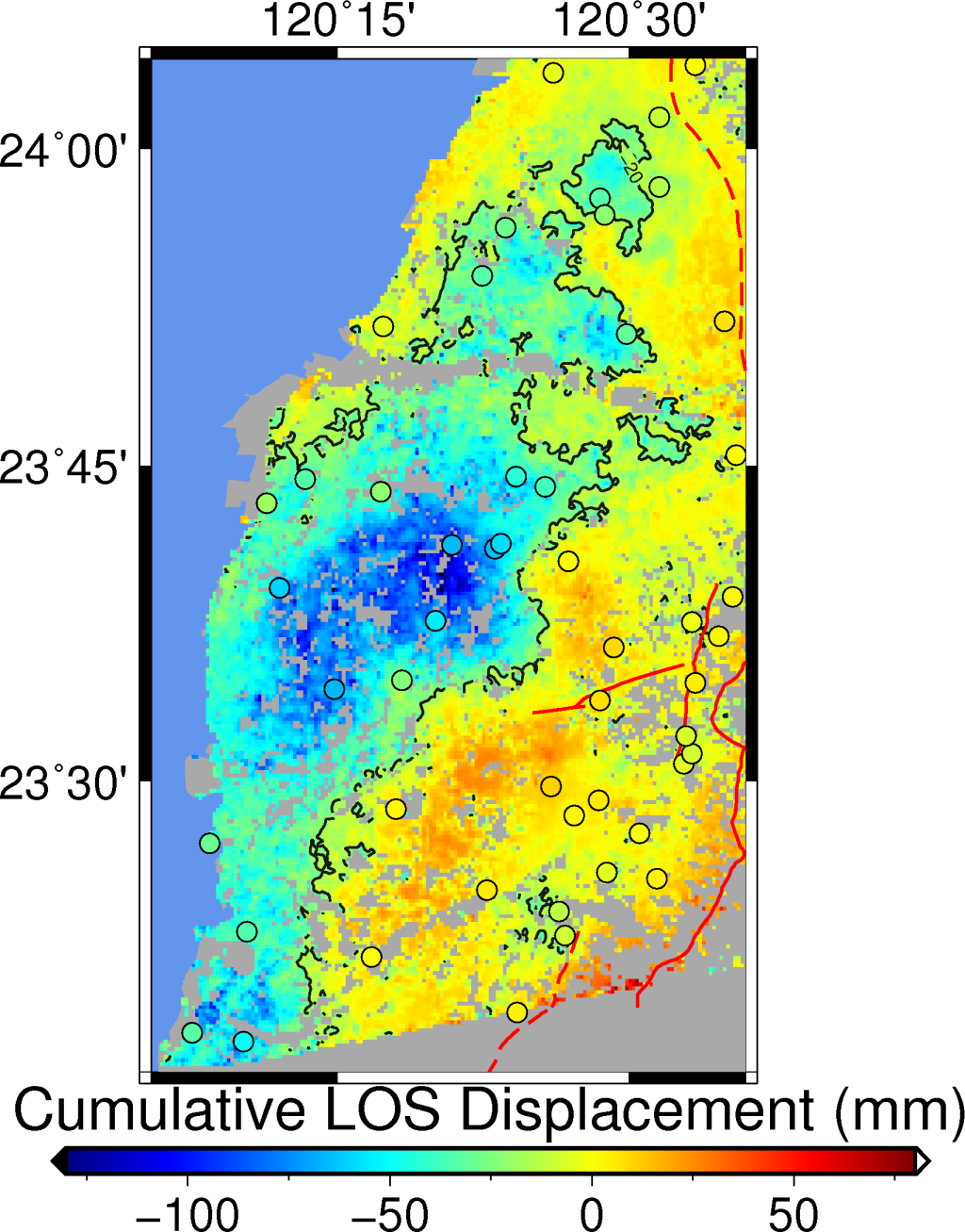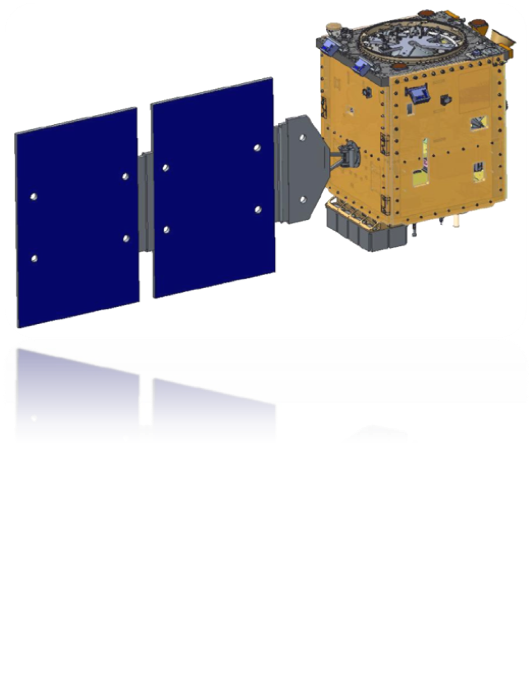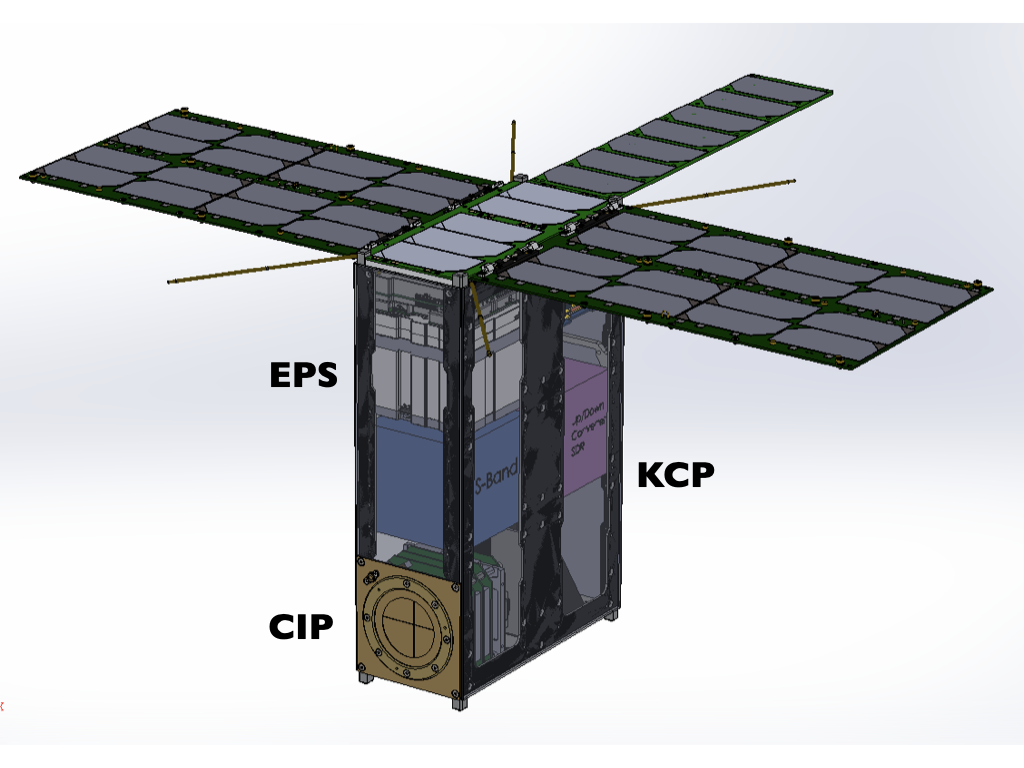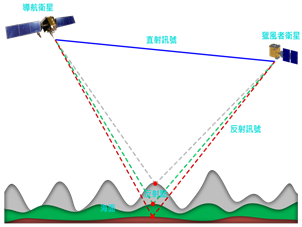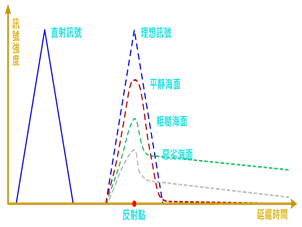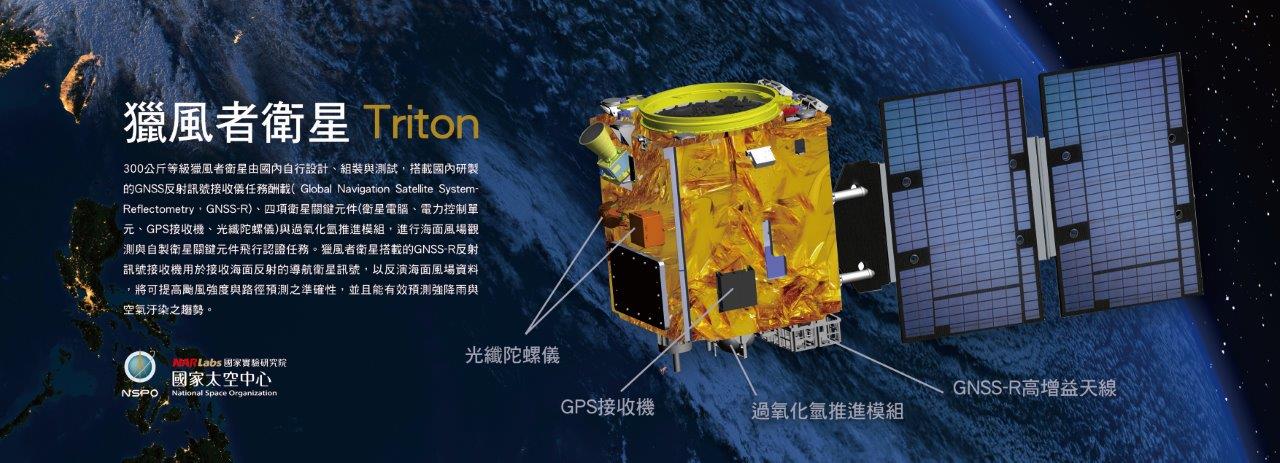| Technical Name | 獵風者 - 從導航訊號取得海面風速 | ||
|---|---|---|---|
| Project Operator | National Space Organization | ||
| Project Host | 林辰宗 | ||
| Summary | Equipped with the GNSS-R, a 300-kg class Triton satellite is developed by NSPOperforms the mission of GNSS sea surface reflection signal researchapplication. Triton satellite collects global navigation satellites’ signals reflected from the surface in low earth orbit,these single data can be used in the research of soil characteristics, air-sea interaction, typhoon intensity prediction etc. |
||
| Scientific Breakthrough | Currently, since there are still many uncertainties in the high wind speed retrieval observations, equipped with the GNSS-R, the Triton satellite has the function of on-orbit soft firmware modification, which can provide the augmentation of scientific mission operationsapplications. In addition, the GNSS-R can receive the Japanese Quasi-Zenith System (QZSS) satellite signal to double the observation of scientific data, which can greatly improve the observation of sea surface wind speed in the area of East Asia. |
||
| Industrial Applicability | The GNSS-R carried by the Triton satellite is developed by domestic industry, academiaresearch institutes (e.g. ITRINational Cheng Kung University). GNSS-R has been carried on the AIDC ASTRTA SPX aircraft to conduct sea surface wind speed observation experiments in Taiwan’s offshore waters. In the future, this technology can be applied to international routes, combined with satellite-borne reflection signal reception, to expand the application of global sea surface wind observation. |
||
| Matching Needs | 天使投資人、策略合作夥伴 |
||
| Keyword | remote sensing GPS receiver GNSS-Reflectometry | ||
- chien@narlabs.org.tw
other people also saw

